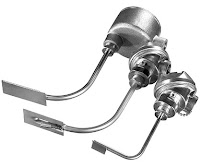 |
| SIEMENS SITRANS FC430 |
By combining the Siemens SITRANS FCS400 sensor and SITRANS FCT030 transmitter, the digitally based SITRANS FC430 is suitable for applications within the process industries. It is also one of the first Coriolis systems worldwide to achieve SIL 2 and 3 approval in hardware and software, respectively – the ultimate assurance of safety and reliability.
The Siemens SITRANS FCS400 is the market’s most compact sensor, making installation and replacement easier than ever. It provides an accuracy rate of 0.1% and high sensitivity for optimal measurement of even low flows. The SITRANS FCS400 features a very stable zero point, low pressure loss, and high immunity to process noise and plant vibrations.
The SITRANS FCT030 transmitter delivers multi-parameter measurements with enhanced efficiency, simplicity and security. Available in a modular design, it can be remote or compact-mounted with all SITRANS FCS400 sensor sizes. An enclosed micro SD card serves as a removable database of operational information and provides direct access to all certificates and audit trails.
The SITRANS FC430 is ideal for a broad array of process industries and applications, including:
The SITRANS FCT030 transmitter delivers multi-parameter measurements with enhanced efficiency, simplicity and security. Available in a modular design, it can be remote or compact-mounted with all SITRANS FCS400 sensor sizes. An enclosed micro SD card serves as a removable database of operational information and provides direct access to all certificates and audit trails.
The SITRANS FC430 is ideal for a broad array of process industries and applications, including:
- Chemical. Designed for optimal performance in hazardous areas and compliant with a wide variety of certificates and approvals, including SIL 2 (hardware), SIL 3 (software), FM, ATEX, CSA
- Food & Beverage/Pharmaceutical. High level of accuracy improves quality control, while multi-parameter measurement ability strengthens process management.
- Oil & Gas. NTEP approved for custody transfer and capable of measuring mass flow directly, ensuring performance is not affected by fluctuating process conditions. Unique tube design results in minimal pressure loss and high resistance to process noise.
- Affiliated Industries/OEMs. Highly customizable nature offers versatility to meet the needs of customers in many different businesses, from food and beverage to automotive to HVAC, to oil and gas to pulp & paper and beyond.
Formore information, contact:
Ives Equipment
877-768-1600

